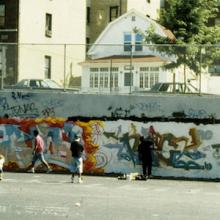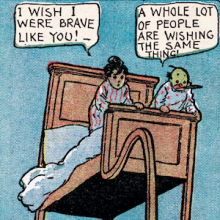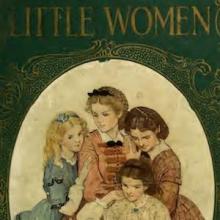North/Central America

Food
The material culture of early childhood in the 21st century is characterized by an emphasis on biological age and related levels of cognitive and motor skill development.

Diapers
The material culture of early childhood in the 21st century is characterized by an emphasis on biological age and related levels of cognitive and motor skill development.

Short Teaching Module: Children and Daguerreotypes (19th c.)
For historians, there are several ongoing debates about the periodization of childhood and its transformation over time. When did children become important and in what capacity? As economic contributors? As the focus of emotional attachment or as subjects prone sentimental idealization?

Short Teaching Module: Graffiti, Gender, and Youth (20th c.)
I use "graffiti art" – the unmediated writings, paintings, and drawings that began to appear in public spaces in New York, Philadelphia, and elsewhere on the east coast during late 1960s – in order to examine the: status of young people as valid historical actors and "citizens" relative to adults

Short Teaching Module: Winsor McCay's Little Nemo in Slumberland
A young, tousled-haired boy about the age of seven is slumbering away in his bed, ensconced in a non-descript, middle class bedroom (fig. 1). He is jarred awake by the revelation that his bed is levitating, and slowly floating out his window and into space.
Short Teaching Module: Children and Disability (19th, 20th c.)
In studying the historical meaning of disability in the U.S., official reports of the myriad institutions established for the care, education, training, and sometimes merely confinement, of persons whose differences set them apart have been a key source of information.

Short Teaching Module: Girlhood and Little Women
Scholars often label the period between 1865 and 1920 the "Golden Age" of Anglo-American children's literature, as this is the period when many of the classics were written and published, including Alice in Wonderland (1865), Ragged Dick (1868), Tom Sawyer (1876), Treasure Island (1884), Rebecca

Short Teaching Module: Codex Mendoza (16th c.)
In Mexico City, towards the middle of the 16th century, Nahuatl-speaking painters created the Codex Mendoza, one of the most lavish indigenous accounts of history and moral behavior known today. Across pages of expensive, imported paper, the painters of the C.
Short Teaching Module: Children and Human Rights (20th c.)
On April 18, 2008, Pope Benedict XVI told the United Nations General Assembly, "The promotion of human rights remains the most effective strategy for eliminating inequalities between countries and social groups, and for increasing security".
Short Teaching Module: Children and Witchcraft (16th c.)
The overall details of the rise and decline of this cultural focus on witches are generally accepted.